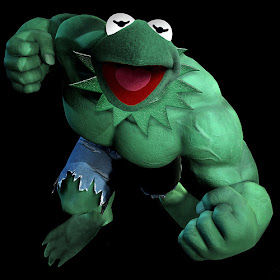It’s not easy being green . . . or so Kermit says. It’s even harder when you’re struggling with
the green-eyed monster who feasts on the flesh of jealousy. Kermit doesn’t seem like the jealous type . .
. perhaps he was green with envy.
Why is green the representative color of such fierce
emotions.
Shakespeare told of the green-eyed monster in Othello “O! Beware my lord, of jealousy; it is the
green-ey’d monster which doth mock the meat it feeds on”
. . . and again in
The Merchant of Venice. "How all the other passions fleet to air,
as doubtful thoughts and rash embraced despair and shuddering fear and
green-eyed jealousy!"
Shakespeare, however, did not make the first association with
the color. That goes back much, much
further.
Sappho, a seventh century B.C. poetess Sappho uses the color
to describe the face of a stricken lover. After that, the word was used freely by
other poets to denote jealousy or envy.
My eyes are dead to
light, my ears
pound, and sweat pours
over me.
I convulse, greener than grass . . .
I convulse, greener than grass . . .
 The Greeks who believed that jealousy was accompanied by an
overproduction of bile. The bodily
fluids or "humors" were said to lend a yellowish-green tinge to he
who was jealous.
The Greeks who believed that jealousy was accompanied by an
overproduction of bile. The bodily
fluids or "humors" were said to lend a yellowish-green tinge to he
who was jealous.
You should note that I say “he who was jealous” . . . he. That is because men have a stronger
tendency towards jealousy than the fairer sex.
How do I know this? It’s
evolutionary, my dear Watson, evolutionary.
It is a fact that males . . . not females . . . risk the possibility that
their offspring could potentially be those of another . . . of a rival male. Therefore men often suffer from “paternity
insecurity" . . . the focus of jealousy is generally pointed directly the would-be
(or could-be) physical infidelity of his chosen mate . . . whether real or
imagined.
“Jealousy is that pain which a man feels from the apprehension that he is not equally beloved by the person whom he entirely loves”






No comments:
Post a Comment